 Mary rallying the crowd in Cradley Heath
Mary rallying the crowd in Cradley Heath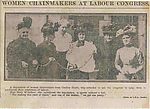 Women chainmakers deputation to Trade Union Congress
Women chainmakers deputation to Trade Union Congress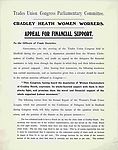 T.U.C appeal (p1)
T.U.C appeal (p1)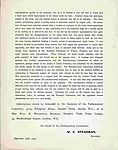 T.U.C. appeal (p.2)
T.U.C. appeal (p.2) Interview with Mary Macarthur
Interview with Mary Macarthur News report on Slaves of the Forge
News report on Slaves of the Forge 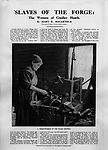 Slaves of the Forge by Mary Macarthur (p1)
Slaves of the Forge by Mary Macarthur (p1)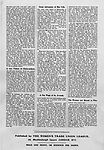 Slaves of the Forge by Mary Macarthur (p2)
Slaves of the Forge by Mary Macarthur (p2) News report on Slaves of the Forge
News report on Slaves of the Forge 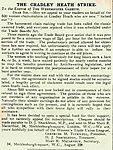 Newspaper appeal
Newspaper appeal German Trade unionist
German Trade unionist Moving pictures
Moving pictures

Mary had been working to improve conditions for working women for some years before the chainmakers' strike in Cradley Heath. She had already visited the area, in 1907, when she was campaigning for a minimum wage. During the strike she supported and inspired the workers, but her real genius lay in the way she was able to make use of the media. Some might say she was the women chainmakers' "spin doctor".
The Trade Board Act set a minimum wage for chainmaking in 1909, but there was a gap of six months before the Act came into effect. Some employers took advantage of this and bullied or tricked women into signing away their rights to the new rates, so that they could stockpile cheap chain. Mary decided to get the good employers on her side. They agreed to pay the new rates if she could guarantee that their prices would not be undercut. The only way to do that was to bring all the women chainmakers out on strike.
Many of the women did not belong to a union. The union could not support them from its funds, so Mary set about raising the money by bringing the dispute to the attention of the nation. Having been a part time journalist served Mary well. She gave interviews, wrote articles and letters and addressed meetings. She gave the press detailed notes of all the meetings. Reports appeared in newspapers all over the country. Some examples are included here for you to read. Mary's biographer, M.A. Hamilton said that, "Journalists were learning to ring up Miss Macarthur if they wanted good copy". News of the strike even reached Europe, America and Australia.
Mary also used the power of cinema. Pathe made a film of the chainmakers' strike. It was shown in over 500 music halls around the country. They estimated that in two weeks about 10,000,000 people would have seen the film.
Not surprisingly, donations flooded in. The strike was successful. To show their gratitude the women chainmakers presented Mary with a gold bracelet watch.
Mary had, "compelled the world to look at Cradley Heath as she saw it; she brought in countesses and ecclesiastics, charwomen and engine cleaners to share the struggle and suffering" of the women chainmakers. (Hamilton, 1925, p95)
Rollover the captions in the box to see the available images in thumbnail format, click the caption to see the full-size image
| Reference: | 709 |
| Keywords: | |
| Archive Ref: | |
| Updated: | Thu 6 Sep 2007 - 12 |
| Interpretation written by | Barbara Harris |
| Author's organisation | |
| Organisation's website |